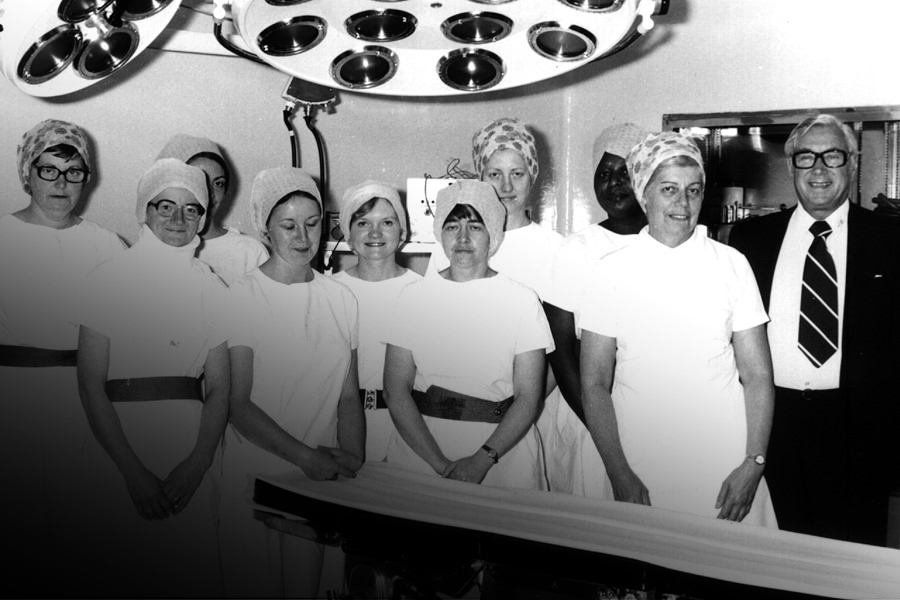Muriel Harris was the theatre superintendent both the Oldham Royal Infirmary and at Oldham and District General Hospital. She played an important and integral part in early IVF research and its later development.
When the collaborative work of Patrick Steptoe and Bob Edwards started in Oldham in 1969 it took place at Oldham and District General Hospital. However, because of the lack of suitable space in the theatre complex for Bob and the lab technician, Jean Purdy, in 1971 the research moved to Kershaw’s Hospital.
Kershaw’s was a small cottage hospital used by the GPs, it was situated about a mile or so from the main hospital. There was an operating theatre adjacent to which was a small room that was ideal for Bob’s purposes. Neither were being used and both were empty. For £200 Muriel equipped the theatre with a second-hand operating table and an old anaesthetic machine!
So as not to interfere with routine NHS work, the egg collections [for the IVF treatment] were done at antisocial hours, either early in the morning or late at night. Occasionally Bob wanted to have one done at other times, and Muriel could always arrange for the necessary staff to be in attendance. She had a group of eight on whom she could call to set up and assist at Kershaw’s. This was all done on their own time and unpaid.

Incidentally, there was no theatre changing room and we had to get into our togs by getting changed together in a tiny room with brooms and cleaning materials. It was a bit of a squeeze when we all arrived at the same time!
Before Louise Brown was born there were many disappointments and at times we got very disheartened, but Muriel, as well as giving the nursing support, provided a great deal of moral support. She had a positive outlook, an attitude which helped everyone.
The IVF programme in Oldham closed shortly after the birth of Louise when Steptoe retired from the NHS. The team then went on to open Bourn Hall, the world’s first IVF clinic, in 1980. Muriel became the matron of Bourn Hall and she not only interviewed for nurses, housekeeping and cleaning staff but also equipped the operating theatre and the wards. The place had been empty for some time so Muriel, with a number of her loyal colleagues, got together with the domestic staff to give the place a thorough clean!
Muriel was a ‘one off’ – a great nurse who was blessed with superb organisational skills, and her input toward the IVF programme both in Oldham and Bourn Hall was immense. Without Muriel’s support, who knows what may have happened.
Bob Edwards and Patrick Steptoe got the accolades and recognition which they undoubtedly deserved, although Patrick unfortunately died before he had the chance to share the Nobel Prize with Bob and receive knighthoods together. Recently Jean Purdy, who died some years ago, had her work recognised in an inscription on a new headstone.
In 2007 Muriel died aged 84 and it seems wrong to me, and so many of her nursing colleagues that Muriel never got the recognition she so richly deserved. The efforts she made helped ensure the success and continuance of IVF, a technique which has now led to over six million babies being born throughout the world.
Explore the remarkable story of in vitro fertilisation from the opposition and immense challenges faced by early pioneers to the latest research today in IVF: 6 Million Babies Later in our Who Am I? gallery. Find out more.
